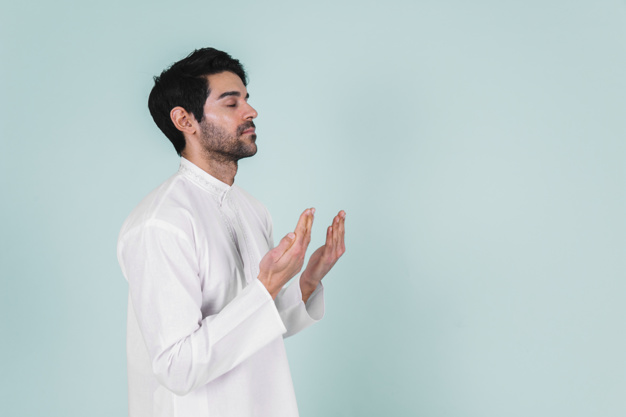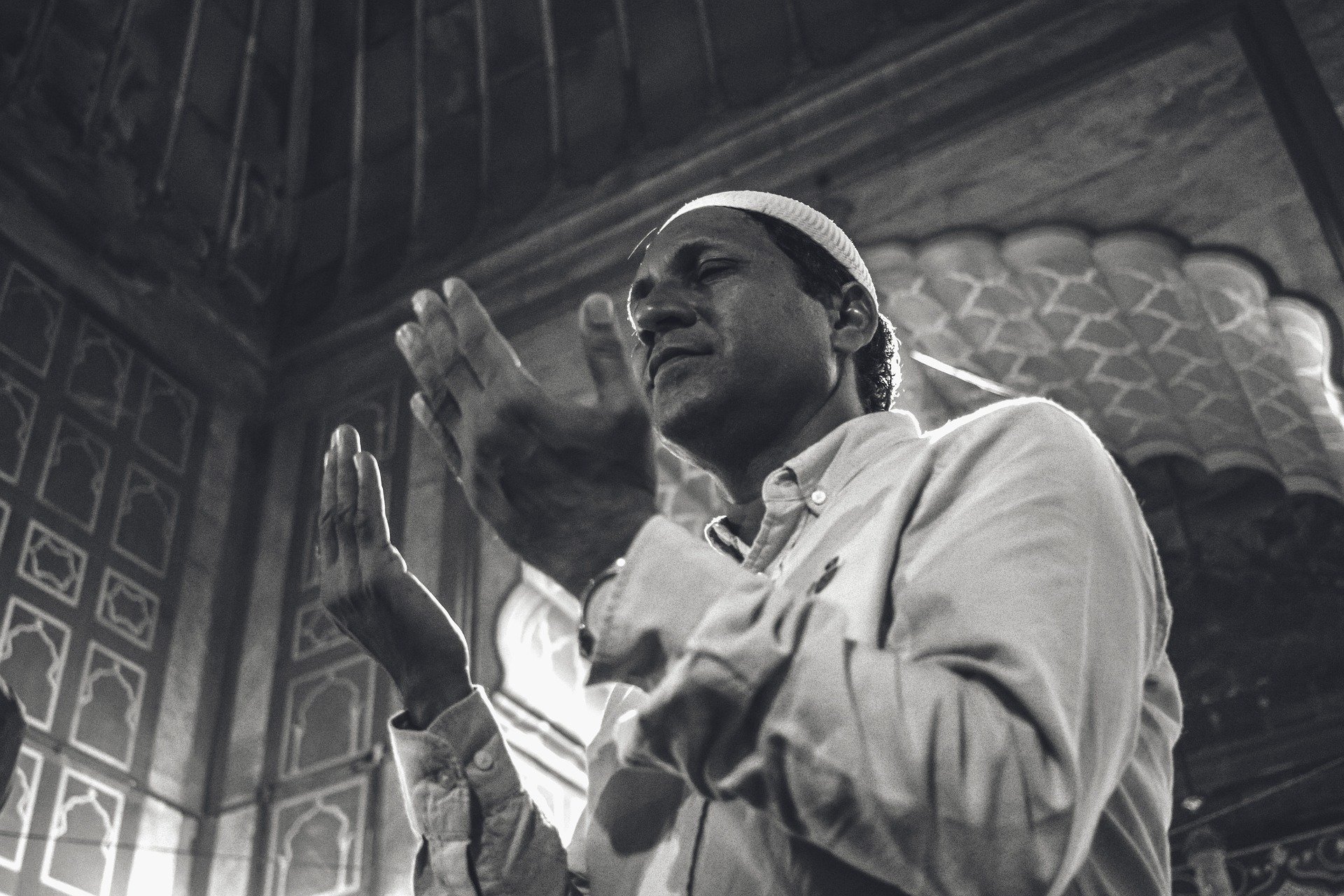Kapanlagi.com - Adhan is the call to prayer for Muslims that is announced by a muadhin. The purpose of the adhan is to summon and call Muslims to perform the five daily prayers. To recite the adhan, a muadhin must first understand the intention of adhan and its procedures. Likewise, there are prayers after the adhan that can be practiced by every Muslim after reciting or listening to it.
The five daily prayers are obligatory for every Muslim. It is not surprising that when it is time for prayer, there is a call or invitation to immediately perform it, known as the adhan.
Therefore, the adhan is recited five times a day according to the prayer times, such as the adhan for Fajr (dawn prayer), Dhuhr (noon prayer), Asr (afternoon prayer), Maghrib (evening prayer), and Isha (night prayer). When the call to prayer is heard, Muslims can perform the five daily prayers, which is a more preferable invitation to pray in congregation.
For this reason, it is necessary to understand the intention of adhan, its procedures, and the prayer after adhan as described in the following review. Here is the intention of adhan, its procedures, and prayers that have been summarized by kapanlagi.com from various sources.
1. History of Adhan

(credit: freepik.com)
Before discussing the intention, procedure, and prayer of the adhan, it is good to understand the true meaning of adhan for Muslims. As mentioned earlier, adhan is a call and invitation to prayer for Muslims to perform the five daily prayers.
Adhan has a long history before it was actually used to call Muslims to prayer. At that time, Prophet Muhammad (PBUH) had a desire to find a way to inform Muslims about the prayer times. Various suggestions were given to Prophet Muhammad (PBUH) by his companions, ranging from the sound of bells, trumpets, or lighting a fire.
However, those suggestions were rejected until one of the companions of Prophet Muhammad (PBUH) named Abdullah bin Zaid had a dream about the call to prayer. According to merdeka.com, quoting from Siah Nabawi (Ibnu Hisyam 2018), Abdullah bin Zaid dreamed of seeing someone in a green robe carrying a bell, intending to buy it to call Muslims.
However, he rejected that idea. Instead, Abdullah bin Zaid was advised to recite the phrase that we know as the adhan as a sign of prayer times. The same thing happened to Umar bin Khatab, who had a similar dream. Eventually, Prophet Muhammad (PBUH) officially established the adhan as a call, invitation, and sign of prayer times. The first adhan was recited by the companion of Prophet Muhammad (PBUH) named Bilal bin Rabbah with his melodious voice.
2. Adhan Requirements

(credit: freepik.com)
The requirements for reciting the adhan need to be known by a muadhin as a call to perform the five daily prayers. The following are the adhan requirements as reported by merdeka.com.
- It is time for prayer.
- Intention for the adhan.
- The adhan is recited in Arabic.
- The adhan is recited in the correct order.
- The recitation is continuous without pauses or other actions, except for sneezing.
- There are no words that change the meaning of the recitation.
- The adhan and iqamah are recited melodiously, so that people from afar can hear the notification of the obligatory prayer times.
3. Adhan Intention

(credit: freepik.com)
As known, before performing various obligatory and voluntary acts of worship for Muslims, it is recommended to recite an intention. The same goes for the adhan, where there are two different opinions regarding the intention of the adhan, whether it is a condition for a valid adhan or simply a voluntary act.
Regarding this matter, some scholars say that a muadhin (caller to prayer) is sufficient to recite the basmallah (In the name of Allah) in a low voice and then proclaim it. Meanwhile, according to umma.id, there is a prayer before the adhan that a muadhin can practice, which is as follows:
"Subhaanallah walhamdulillah wala ilahaillah wallahuakbar, wala haulawala kuuwata illabillahiladhim, allahummasholli wasallim 'ala sayyidina muhammadillahu ya kariim."
Meaning:
"Glory be to Allah, all praise is for Allah, and there is no god but Allah, the Most Great. And there is no power or strength except with Allah, O Allah, bestow mercy on our Prophet Muhammad, the Generous."
4. Procedure for Adhan

(credit: freepik.com)
The procedure for Adhan that a muezzin needs to know before reciting it is as follows, as quoted from merdeka.com:
Procedure for Adhan:
- A muezzin must be in a state of purity or have performed ablution beforehand.
- Facing the qibla.
- Inserting the fingers into the ears.
- Standing.
This is in accordance with the saying of the Prophet Muhammad, "O Bilal, stand up and call the people to prayer" (Narrated by Ibn Umar).
- Connecting each two phrases of Takbir (2 Takbirs in one breath).
- Adding the phrase "Ash Shalatu Khairum Minannaum" during the Adhan for Fajr prayer.
- Turning to the right when saying "Hayya Alas Shalah".
- Turning the head to the left when saying "Hayya Alal Falah".
5. Recitation of Adhan

(credit: freepik.com)
As for the recitation of Adhan that a muezzin can practice, you can refer to the following explanation. Here are the recitation and their meanings.
Recitation of Adhan:
Allaahu Akbar, Allaahu Akbar. (2X)
Asyhadu allaa ilaaha illallaah. (2X)
Asyhadu anna Muhammadar Rasulullah. (2X)
Hayya alash Shalaah. (2X)
Hayya alal Falaah. (2X)
Allaahu Akbar, Allaahu Akbar.
Laa ilaaha illallaah.
In the Fajr Adhan, the phrase is added:
Ash shalatu khairum minannaum. (Prayer is better than sleep).
This phrase is recited between the fifth and sixth phrases, that is:
Hayya alal falaah.
Allaahu Akbar, Allaahu Akbar
Meaning of the Adhan recitation:
Allah is the Greatest, Allah is the Greatest. (2x)
I bear witness that there is no god but Allah. (2x)
I bear witness that Muhammad is the Messenger of Allah. (2x)
Come to prayer. (2x)
Come to success/victory. (2x)
Allah is the Greatest, Allah is the Greatest. (1x)
There is no god but Allah. (1x)
6. Prayer After Adhan

(credit: pixabay.com)
The prayer after adhan can be recited by a muadhin and Muslims after reciting or listening to the adhan. There are blessings that Muslims can attain after reciting or listening to it according to the hadith of Prophet Muhammad (PBUH) which states,
"Whoever, upon hearing the adhan, then says the prayer after adhan, my intercession will be granted to him on the Day of Judgment." (HR. Bukhari).
As for the recitation of the prayer after adhan, it is as follows:
"Allaahumma robba haadzihid dawatit taammah, washsholaatil qoo-imah, aati sayyidanaa muhammadanil washiilata wal fadhiilah, wasysyarofa, wad darajatal, aaliyatar rofiiah, wabatshu maqoomam mahmuudanil ladzii waadtah, innaka laa tukhliful miiaadz."
Meaning:
"O Allah, Lord of this perfect call (adhan) and the established prayer. Grant al-wasilah (a high position in Paradise) and al-fadhilah (virtues) to Prophet Muhammad. And raise him to the praiseworthy position that You have promised." (HR. Bukhari, Abu Dawud, Tarmidzi, Nasai, and Ibn Majah)
That is the intention, procedure, and prayer of the adhan that Muslims need to know. Therefore, the discussion about the adhan as mentioned above can be a reference for you to practice.
(kpl/nlw)
Disclaimer: This translation from Bahasa Indonesia to English has been generated by Artificial Intelligence.


















